Clement Page
-
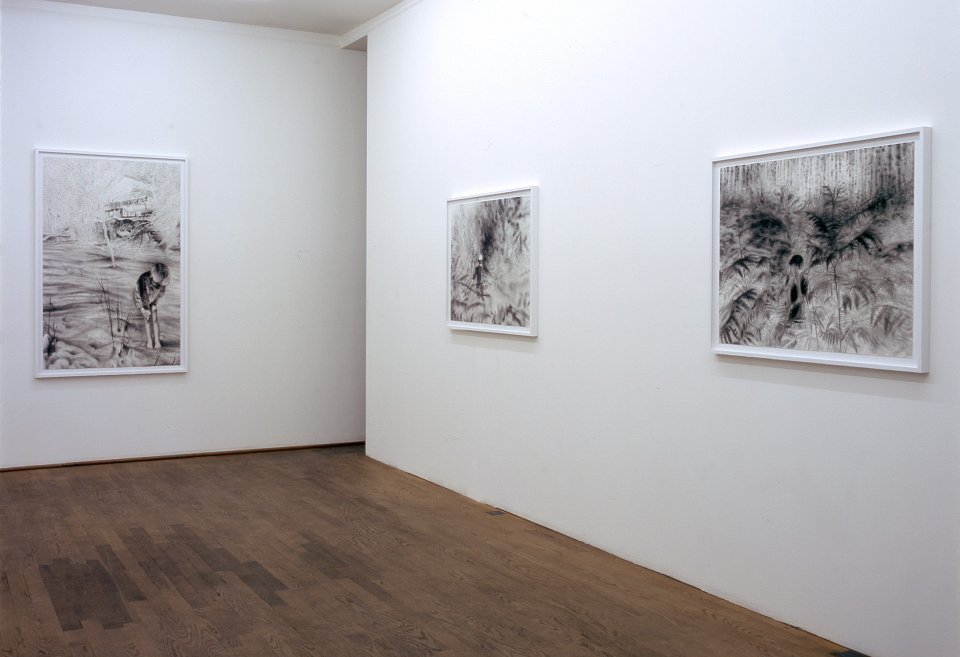
installation view, Kuckei + Kuckei, 2009
-
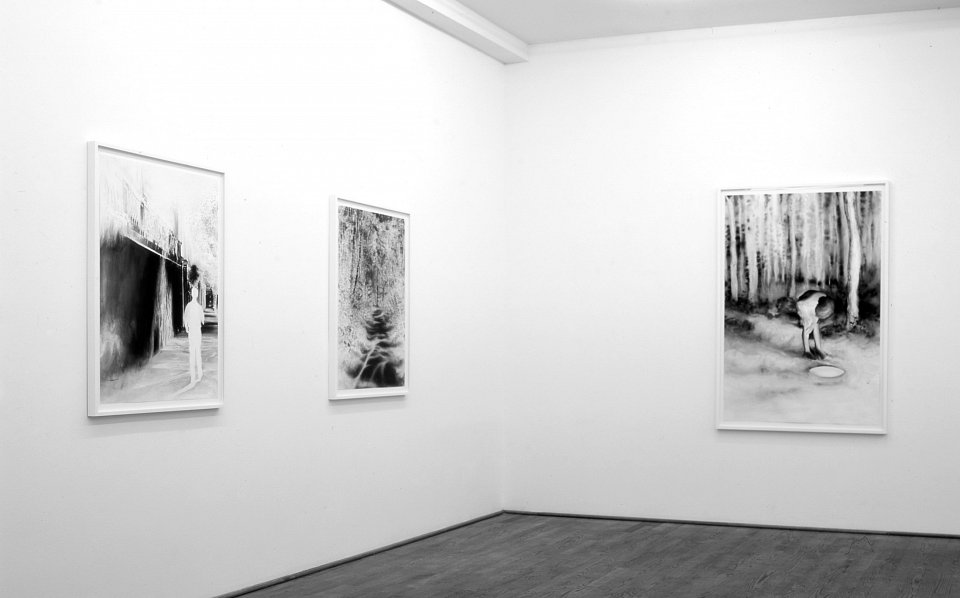
installation view, Kuckei + Kuckei, 2009
-
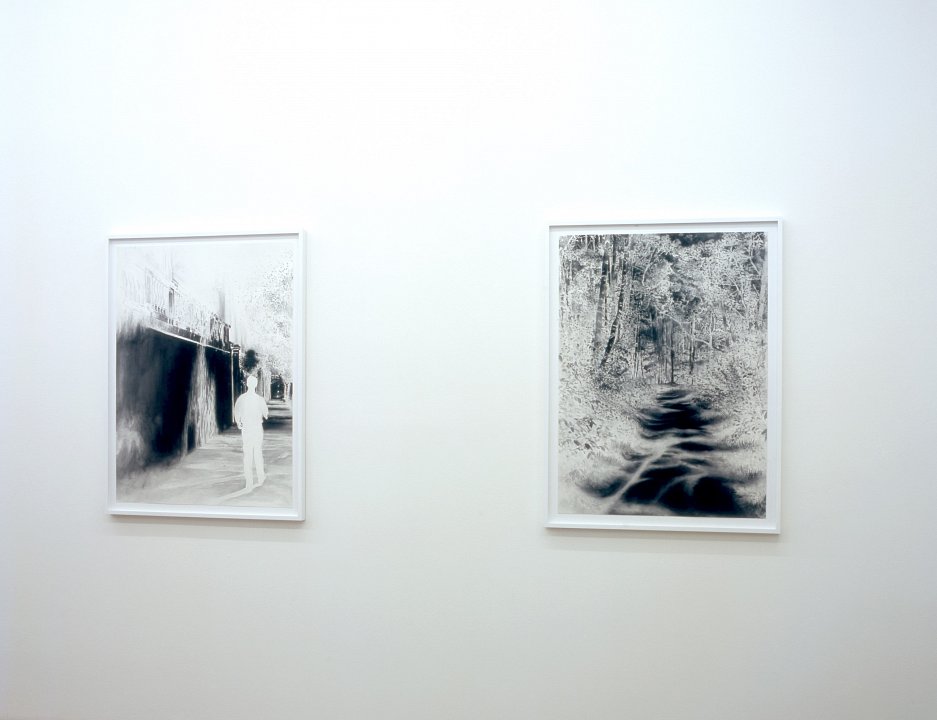
installation view, Kuckei + Kuckei, 2009
-
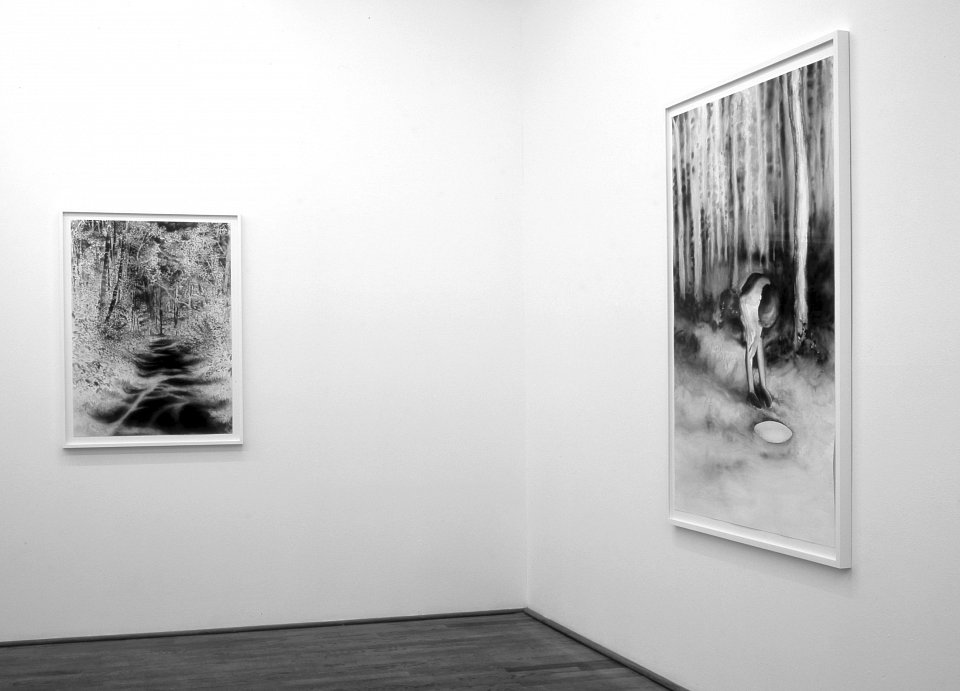
installation view, Kuckei + Kuckei, 2009
-
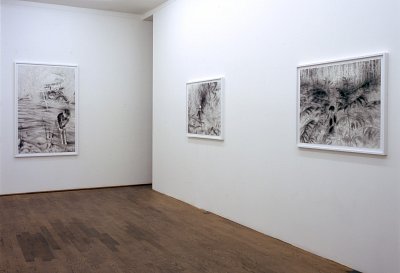
installation view, Kuckei + Kuckei, 2009
-

installation view, Kuckei + Kuckei, 2009
-
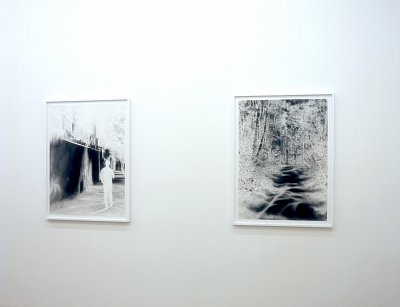
installation view, Kuckei + Kuckei, 2009
-

installation view, Kuckei + Kuckei, 2009
Clement Page’s intense monochrome watercolors, although initially inspired by Freud’s classic case study of the Wolfman have taken on a life of their own, exploring the space of memory, desire, dream and experience. The watercolors appear to be in the form of photographic negatives, an increasingly archaic form of producing a positive image. This functions as a coherent trope for the unconscious – the negative is the »unconscious« equivalent of the »positive« conscious mind. Page employs la vraie aquarelle, or »true watercolor technique«, not using any white or opaque pigments but only the white of the paper combined with transparent washes. This gives the paintings a shifting, effervescent quality, as if they existed between two perceptual realms, that of the »real« and that of memory and dreams.
What is not shown is as important as what is seen, the »gaps« in perception, the white-paper, that which is before the painting, ends up being a large percentage of the final work.And as the negative functions as the unconscious, so on another level the white within the painting is also a trope for the unconscious, literally the »ground of being« destroying the black, eating away at the form, as fantasy leaches into reality and suppressed desire is manifest in the real world in unconscious behavior and sublimated action. Since this is a negative the white is in fact a representation of shadow, the dark hidden unconscious; every conscious thought has a negative, or unconscious shadow. Page uses the negative to create a »dream space«, a world in which things are, although recognizable as tangible objects, in a state of constant flux, dissolution and reconfiguration. Objects blur into one another, boundaries dissolve and substantial areas of the work erupt into a pre-figurative mythopoeia. This correlates to the process by which conscious certainty is eroded by dream ideas and unconscious activity. The unconscious being the ontology or origin of a person’s »reality« of what is considered their »real life«.
The paintings are constructed from several different images, like dreams, a montage of different perspectives and sources, questioning the language of photographic seeing, the relationship between figuration and abstraction and between the flatness of the paper and the depiction of depth. The images are first highly manipulated, the artist digitally »painting« into the negatives before they are printed out and combined with images which are positive, thus disrupting a coherent and conventional reading of space. There is in fact a complete deconstruction of conventional spatial depth – such as aerial perspective and depth of field. These strategies perfectly echo the mechanisms of the unconscious as it constructs alternate and constantly shifting visual realities in the dream world.